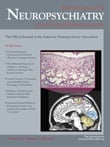The past 15 years has yielded an explosion of information on the topic of concussive injuries in sports, both in the public press and in the professional literature. In 2005 the Centers for Disease Control concluded that concussion in sports was of “epidemic” proportion and estimated that 1.6 to 3.8 million cases of sports-related concussions occur annually in the United States. At least six major sports neuroscience textbooks have appeared in the past decade, including Sports Neurology by Jordan, Tsairis, and Warren (1998); Sports-Related Concussion by Bailes, Lovell, and Maroon (1998); Neurologic Athletic Head and Spine Injuries by Cantu (2000); Neurologic Sports Medicine by Bailes and Day (2001); Traumatic Brain Injury in Sports by Lovell, Echemendia, Barth, and Collins (2004); and Foundations of Sports-Related Brain Injuries by Slobounov and Sebastianelli (2006). The most recent addition to the armamentarium of sports concussion textbooks is the edited book by Dr. Ruben Echemendia, a founding member of the Penn State Cerebral Concussion Program and a recent past president of the National Academy of Neuropsychology.
Sports Neuropsychology is divided into five sections. The contributing authors are primarily neuropsychologists, but also include a neurologist, a certified athletic trainer, and a sports medicine physician. Section one addresses some of the history of sports neuropsychology. Section two is devoted to the epidemiology and pathophysiology of traumatic brain injury in sports, sideline assessment of the concussed athlete, and return to play decisions. Section three discusses the nuts and bolts of neurocognitive testing programs at various levels of competition, including high school, collegiate, and professional programs. Section four is an overview of the four most frequently utilized computerized neurocognitive platforms for assessing the cognitive effects of sports concussion, and includes overviews (written in part by the developers) of CogSport, The HeadMinder Concussion Resolution Index, ImPACT, and Automated Neuropsychological Metrics (ANAM) Sports Medicine Battery. Section five concludes the text with perspectives from an athletic trainer and a sports medicine team physician.
The text will likely be of greatest interest to neuropsychologists, since two of the five major sections of the book are devoted to overviews of computerized neurocognitive batteries, as well as information on sports concussion testing programs at various levels of competition. The chapters on computerized neurocognitive tests are superior in depth to the information presented in the text by Lovell et al. (2004). The text by Mark Lovell and colleagues addresses sports concussion testing by sport, whereas Sports Neuropsychology covers the subject matter by age group. Though dated, the texts by Bob Cantu (2000) and Barry Jordan and associates (1998) are likely to be of greater interest to neurologists and neurosurgeons. Sports Neuropsychology will be of interest to other sports medicine clinicians who are interested in obtaining an in-depth appreciation of the history and development of neurocognitive testing in sports, and how various cognitive functions are assessed by the different computerized neurocognitive tests. Athletic trainers and team physicians may find the chapter on sideline assessment particularly useful. Students or neuroscientists needing a review of sports concussion epidemiology and basic concussion pathophysiology will also find the book valuable. Any professional member of a sports medicine team who deals with athletic concussions and their associated issues will find the perspectives presented by Echemendia (neuropsychologist), Putukian (team physician), and Furtado (athletic trainer) particularly useful and informative. Sports Neuropsychology is well-written, does not suffer from the redundancy found in many edited texts, and should be considered a useful and authoritative review of the status of this emerging specialty.
Acknowledgments
Dr. Solomon is the Team Neuropsychologist for the Nashville Predators, the Consulting Neuropsychologist for the Tennessee Titans, and a Clinical Assistant Professor of Psychiatry at the Vanderbilt University School of Medicine.

